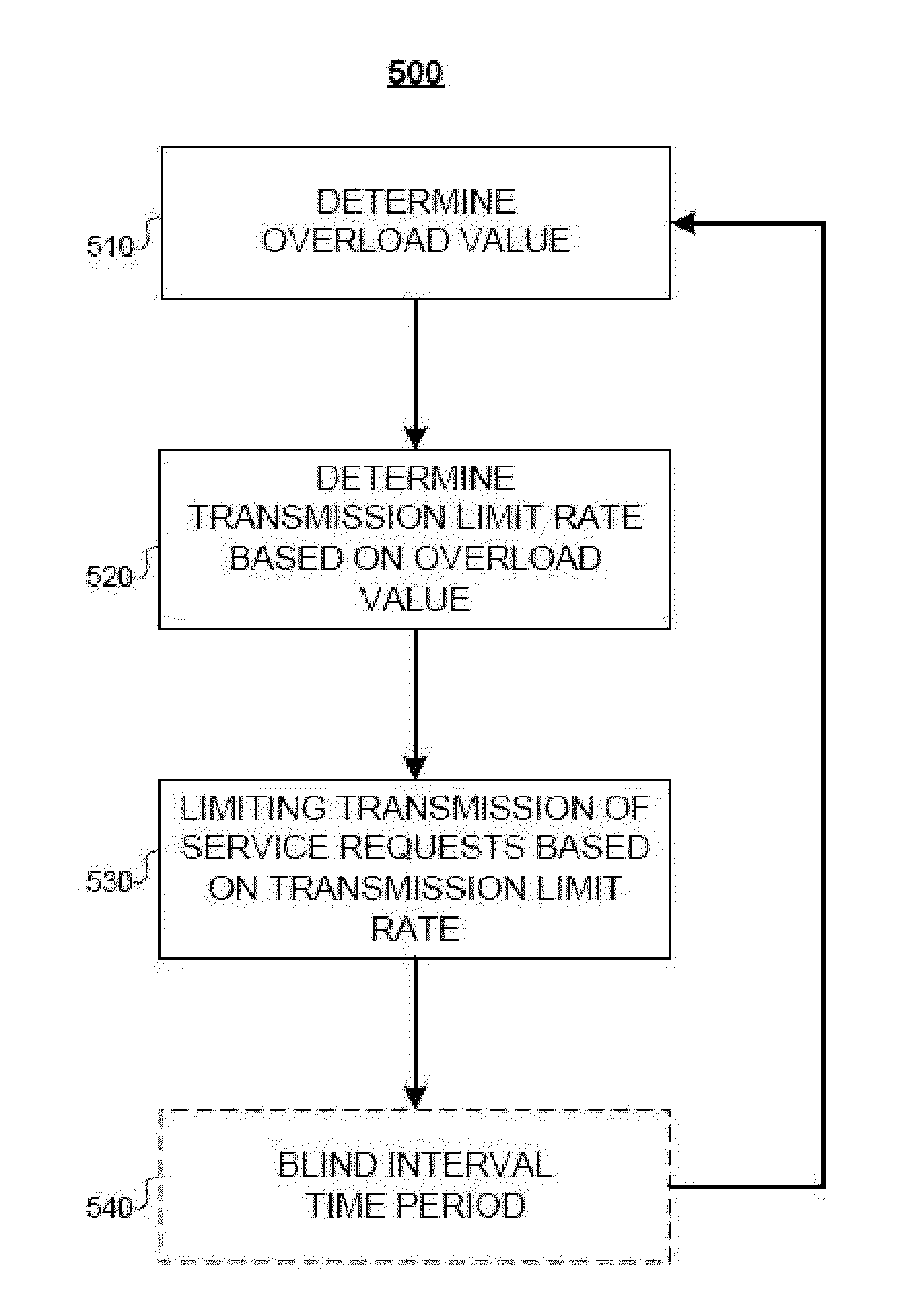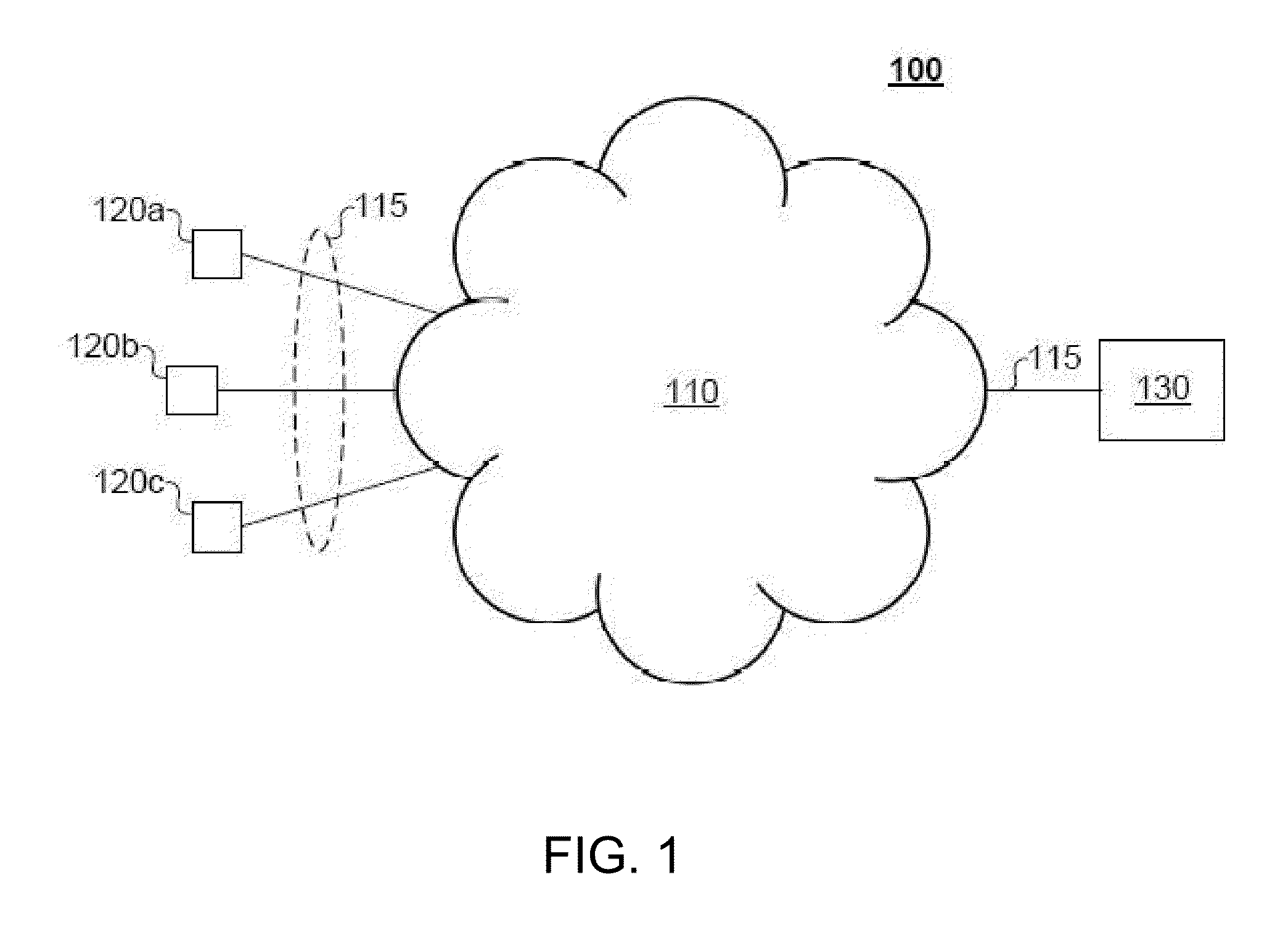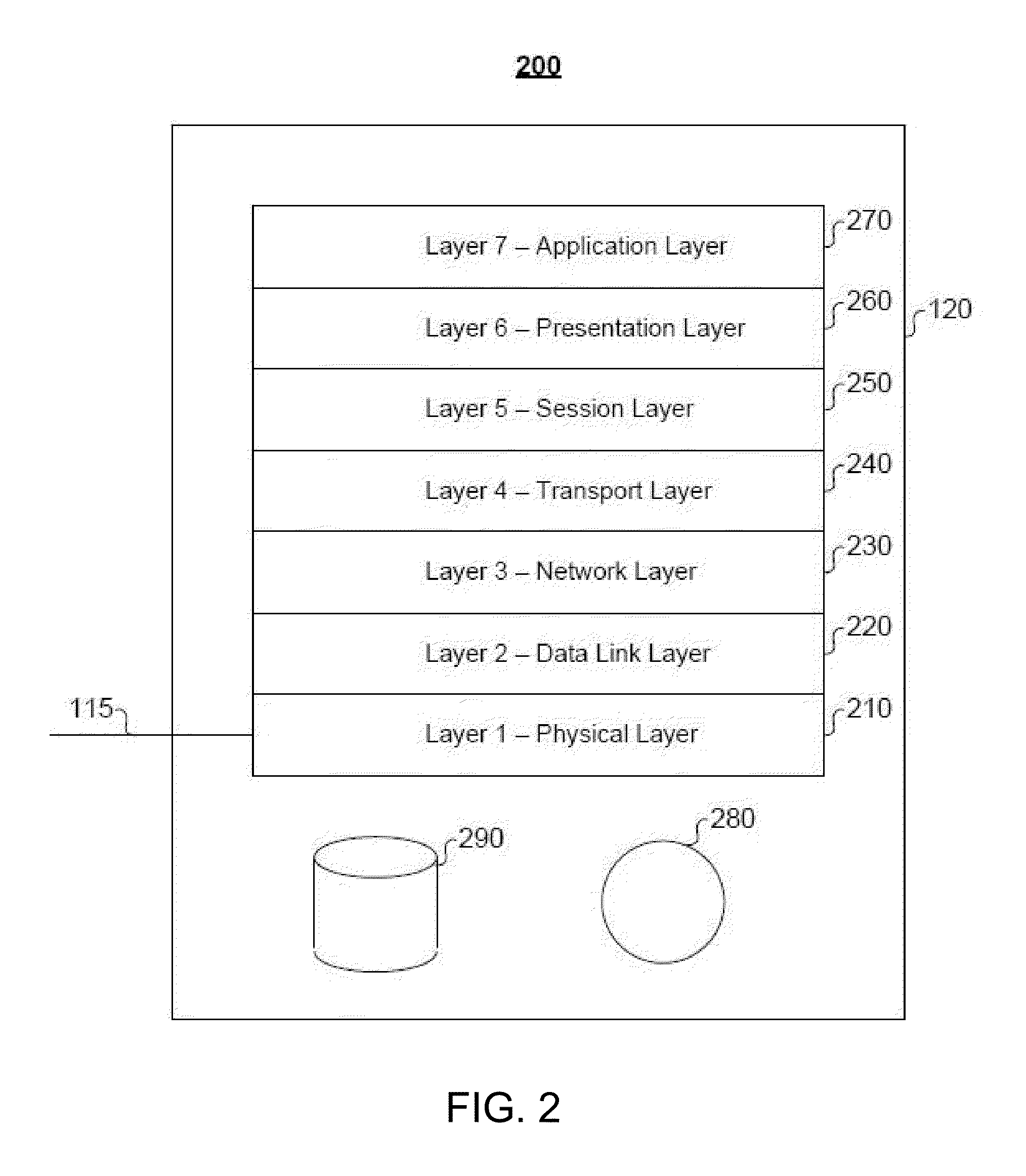Methods and apparatus for detecting and limiting focused server overload in a network
a technology of focused server and network, applied in the direction of sustainable buildings, high-level techniques, instruments, etc., can solve the problems of prolonged overload of servers, severe reduction of successful service completion, unavailability of services to clients, etc., to prevent unnecessary use of network bandwidth, reduce the number of messages, and achieve fast and efficient
- Summary
- Abstract
- Description
- Claims
- Application Information
AI Technical Summary
Benefits of technology
Problems solved by technology
Method used
Image
Examples
Embodiment Construction
I. Network Overview
[0054]The systems and methods described herein provide for storing communication protocol statistics (e.g., received via feedback messages from a downstream server) in a computer using a space-efficient and computationally-efficient data structure (e.g., a bloom filter, a counting bloom filter, or a multi-level threshold based bloom filter (MLBF)). It should be understood that the term bloom filter is used in this specification generally, and can refer to any type of bloom filter, such as a traditional bloom filter, a counting bloom filter, and / or a MLBF. Servers on the network determine whether an overload episode exists for a downstream server or destination (e.g., whether a focused overload exists for a downstream server) using the data structure. If an overload exists, control parameters are calculated using a computer that define a control action that is distributed to one or more network components to control the overload episode (e.g., by reducing the trans...
PUM
 Login to View More
Login to View More Abstract
Description
Claims
Application Information
 Login to View More
Login to View More - R&D
- Intellectual Property
- Life Sciences
- Materials
- Tech Scout
- Unparalleled Data Quality
- Higher Quality Content
- 60% Fewer Hallucinations
Browse by: Latest US Patents, China's latest patents, Technical Efficacy Thesaurus, Application Domain, Technology Topic, Popular Technical Reports.
© 2025 PatSnap. All rights reserved.Legal|Privacy policy|Modern Slavery Act Transparency Statement|Sitemap|About US| Contact US: help@patsnap.com



